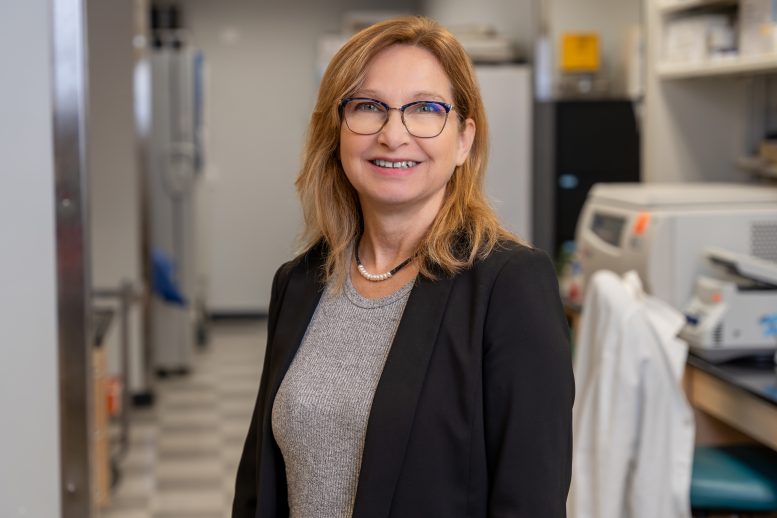New analysis reveals that polyploid large most cancers cells (PGCCs), which may adapt and survive post-therapy, are key to most cancers recurrence. These cells change genes to guard themselves towards remedy, later dividing to trigger tumor regrowth. Focusing on these cells with particular inhibitors like p21 throughout remedy would possibly enhance most cancers remedy outcomes.
Scientists have found that polyploid large most cancers cells, that are monstrously outsized and include a number of nuclei, could also be liable for illness recurrence after most cancers remedy.
Researchers at MUSC Hollings Most cancers Middle have made a breakthrough which will reveal why most cancers generally returns in sufferers who’ve obtained chemotherapy or radiotherapy.
Each types of remedy goal to emphasize most cancers cells into self-destruction. Nonetheless, these therapies typically lack long-term effectiveness as a result of most cancers cells can adapt to the stress, escape, and allow the tumor to rebound after a short while.
Just lately, scientists have begun to take a look at the position of polyploid large most cancers cells, or PGCCs, in most cancers recurrence. Though these cells have been identified to scientists for the reason that invention of the microscope and have been noticed by pathologists in cancerous tissues, their actual operate in most cancers recurrence remained unknown.
In a current article within the Journal of Organic Chemistrya MUSC Hollings Most cancers Middle analysis workforce led by Christina Voelkel-Johnson, Ph.D., experiences that it has recognized choose genes that prostate most cancers cells manipulate to turn into PGCCs, thereby defending themselves from remedy stress. The Hollings workforce additionally discovered that PGCCs later regained their capability for cell division, setting the stage for most cancers recurrence.
Sudden Discoveries in Lab Experiments
Voelkel-Johnson and her lab made this discovery whereas learning an inhibitor, or a drug designed to dam a organic mechanism, which was related to sturdy cures after radiotherapy. “We initially thought that mixture of radiation with the inhibitor killed most cancers cells higher,” mentioned Voelkel-Johnson. “It was solely when the inhibitor did not make a distinction in short-term experiments that the timeframe was prolonged, which allowed for an uncommon remark.”
Lab members had noticed large abnormal-looking cells through the short-term experiments however had thought of them to be “doomed.” When the timeframe was prolonged, they have been shocked to look at that these cells generated small offspring.
This time-lapse video exhibits formation of PGCC in ovarian most cancers cells in response to remedy stress. Credit score: Video courtesy of Joe. R. Delaney, Medical College of South Carolina
“They regarded actually funky,” mentioned Voelkel-Johnson. “Once we didn't use the inhibitor, these large most cancers cells generated daughter cells, creating the looks of a colony with smaller cells surrounding the big one.”
These funky-looking PGCCs have been visually completely different from different most cancers cells. They have been capable of make copies of their genetic info, rising the variety of nuclei. Nonetheless, the cytoplasm was not dividing, and so the cells grew monstrously, containing a number of nuclei as a substitute of just one.

MUSC Hollings Most cancers Middle researcher Dr. Christina Voelkel-Johnson. Credit score: Medical College of South Carolina. {Photograph} by Sarah Pack.
The shock findings that the monster cells weren’t “doomed” led Voelkel-Johnson and her workforce to suspect that their inhibitor stopped most cancers recurrence otherwise than they’d hypothesized.
“The inhibitor didn’t kill most cancers cells higher,” mentioned Voelkel-Johnson. “As an alternative, it prevented the technology of offspring from the polyploid large most cancers cells.”
The workforce additionally noticed that the daughter cells of the PGCCs continued to divide, mimicking tumor recurrence that some sufferers expertise after present process remedy. It turned clear that this inhibitor was creating sturdy cures not by inflicting cell demise however by stopping PGCCs from transitioning again into single-nucleus most cancers cells with the capability for division.
To grasp what made PGCCs and their daughter cells completely different from their mother or father most cancers cells, Voelkel-Johnson, with the assistance of different collaborators, got down to examine the adjustments in gene expression among the many completely different cells that appeared throughout their experiments. This info would assist to elucidate how most cancers cells can transition into and out of PGCC states after being uncovered to remedy stress.
Genetic Insights and Therapeutic Implications
Voelkel-Johnson and her workforce have been capable of determine cell-signaling pathways that most cancers cells manipulate to turn into PGCCs in response to remedy stress after which later to transition again to cells able to producing daughter cells.
One protein that particularly piqued their curiosity was p21, which is induced by a protein referred to as p53 when regular cells are careworn. In regular cells, p21 prevents duplication of broken DNAenabling DNA harm to be repaired. Cells by which harm can’t be repaired commit suicide.
The Hollings analysis workforce confirmed that stress in most cancers cells missing p53 additionally elevated p21, however the protein didn’t cease the duplication of broken DNA, because it did in regular cells. Because of this, p21 helped to set the stage for the technology of the PGCCs.
When will increase in p21 have been blocked, the careworn most cancers cells didn’t rework into these monstrous cells. Interfering with p21 in cells that have been already monstrous prevented them from producing daughter cells that may very well be liable for tumor relapse.
The workforce's findings present insights into novel mechanisms that may very well be focused to enhance affected person outcomes after most cancers remedy. Though it will not be possible to dam p21 as a remedy, each the breast most cancers drug tamoxifen and cholesterol-lowering statins have been proven to intervene with the pathways recognized by the workforce. Additional analysis is required to evaluate whether or not they can cut back recurrence charges by blocking PGCCs from regaining the power to generate daughter cells.
The findings additionally present new perception into the optimum timing for the administration of those medicine.
“One of many questions we had was, 'At what level of the remedy do you deal with?'” mentioned Voelkel-Johnson. “Our findings recommend that remedy ought to happen similtaneously chemotherapy or radiotherapy. It is very important administer one in every of these medicine together with remedy stress to forestall PGCCs from producing the daughter cell. As soon as they’re generated, it’s too late.”
Voelkel-Johnson plans to proceed to analyze methods to forestall the technology of daughter cells from PGCCs to extend remedy efficacy. She can be desirous about assessing how numerous mixture remedy regimens delivered on the time of most cancers remedy have an effect on recurrence charges in a variety of cancers.
Reference: “Transcriptome evaluation of polyploid large most cancers cells and their progeny reveals a practical position for p21 in polyploidization and depolyploidization” by Shai White-Gilbertson, Ping Lu, Ozge Saatci, Ozgur Sahin, Joe R. Delaney, Besim Ogretmen and Christina Voelkel-Johnson, 4 March 2024, Journal of Organic Chemistry,
DOI: 10.1016/j.jbc.2024.107136
The examine was funded by the Nationwide Most cancers Institute, the Nationwide Institutes of Well beingand the American Most cancers Society.










